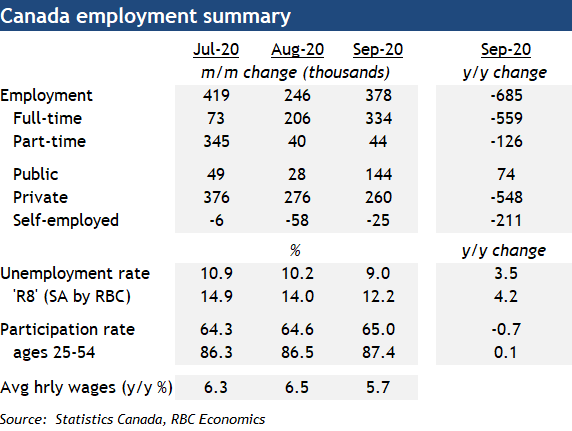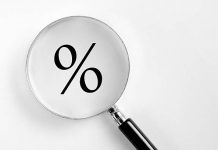- 378k increase in employment market an unexpected acceleration from August
- The unemployment rate declined to 9.0%
- Pace of improvement in labour markets still slowing amid rising virus case counts
The 378k increase in employment was stronger-than-expected, above the 246k August increase and with similarly solid underlying details. The increase was led by full-time work (+334k) and the share of those working part-time when they would rather have full-time hours declined after spiking higher over the prior two months. The unemployment rate is still very high, but declined to 9.0% in September from 10.2%. And that was despite an increase in overall labour force participation. The number of people not employed and not looking for work (and so not counted as ‘unemployed’) declined by another 132k. The labour force participation rate for those aged 25 to 54 was back above pre-shock February levels at 87.4% in September.
Still, the numbers will do little to calm concerns that the broader pace of the recovery in labour markets is slowing. The initial recovery in employment has been led by the return to work of those on temporary layoff from the spring. But there were still over 700k more people on permanent layoff in September than a year ago, and those numbers have been dropping more slowly. The employment count itself is still more than 700k below February levels. The pace of growth in other economic indicators has generally remained positive but is also slowing (with the exception of booming housing markets over the summer). And the larger concern remains the extent to which the latest round of virus spread will prompt additional containment measures and keep more households at home. The near-term economic bounce-back through the summer was been stronger than feared in the spring, but the outlook is still exceptionally cloudy.














